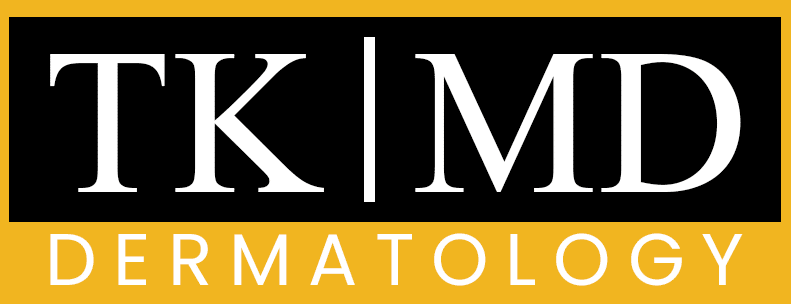Dyshidrotic eczema, also known as pompholyx, is a specific type of eczema that primarily affects the hands and feet. This condition is characterized by the sudden appearance of small, itchy blisters on the palms, sides of the fingers, and soles of the feet. These blisters can be quite uncomfortable and may lead to significant distress for those who experience them.
The name “dyshidrotic” refers to the condition’s association with sweating, as it often flares up during warmer weather or periods of increased perspiration. Understanding dyshidrotic eczema is crucial for those who suffer from it, as it can significantly impact daily life. The blisters can be painful and may cause a burning sensation, leading to difficulty in performing everyday tasks.
While the exact cause of dyshidrotic eczema remains unclear, it is believed to be linked to various factors, including allergies, stress, and environmental irritants. By gaining insight into this condition, we can better manage its symptoms and improve our quality of life.
Key Takeaways
- Dyshidrotic eczema is a skin condition that causes small, itchy blisters on the hands and feet.
- Symptoms of dyshidrotic eczema include blisters, itching, redness, and flaking skin.
- The exact cause of dyshidrotic eczema is unknown, but it is believed to be related to allergies, stress, and certain metals.
- Risk factors for dyshidrotic eczema include a history of atopic dermatitis, allergies, and exposure to certain metals like nickel.
- Diagnosis of dyshidrotic eczema is usually based on the appearance of the blisters and a physical examination by a doctor.
Symptoms of Dyshidrotic Eczema
The symptoms of dyshidrotic eczema can vary from person to person, but they typically begin with the development of small, fluid-filled blisters. These blisters often appear on the fingers, palms, and soles of the feet, and they can be intensely itchy. As the condition progresses, the blisters may become red and inflamed, leading to discomfort and irritation.
In some cases, the blisters may even crack open, resulting in painful fissures that can become susceptible to infection. In addition to the physical symptoms, dyshidrotic eczema can also have emotional and psychological effects. The visible nature of the blisters can lead to embarrassment or self-consciousness, particularly in social situations.
Many individuals find themselves avoiding activities that may exacerbate their symptoms or draw attention to their hands and feet. This emotional toll can be just as challenging as the physical symptoms, highlighting the importance of addressing both aspects when managing dyshidrotic eczema.
Causes of Dyshidrotic Eczema

While the precise causes of dyshidrotic eczema remain elusive, several factors are believed to contribute to its onset. One significant factor is a person’s genetic predisposition to skin conditions. If we have a family history of eczema or other allergic conditions, we may be more likely to develop dyshidrotic eczema ourselves.
Additionally, environmental triggers such as exposure to certain metals, chemicals, or allergens can play a role in exacerbating symptoms. Stress is another critical factor that can lead to flare-ups of dyshidrotic eczema. When we experience heightened levels of stress or anxiety, our bodies may react in various ways, including skin irritations.
This connection between emotional well-being and skin health underscores the importance of managing stress effectively.
Furthermore, excessive sweating or changes in temperature can also trigger episodes of dyshidrotic eczema, making it essential for us to be mindful of our environment and how it affects our skin.
Risk Factors for Dyshidrotic Eczema
Several risk factors can increase our likelihood of developing dyshidrotic eczema. One of the most significant risk factors is age; this condition is most commonly seen in adults between the ages of 20 and 40. However, it can also affect children and older adults.
Additionally, individuals with a history of atopic dermatitis or other allergic conditions are at a higher risk for developing dyshidrotic eczema.
Occupational exposure is another important consideration when examining risk factors.
Those who work in jobs that require frequent handwashing or exposure to irritants—such as healthcare workers, hairdressers, or factory workers—may find themselves more susceptible to this condition.
Furthermore, individuals living in humid climates or those who sweat excessively may also experience a higher incidence of dyshidrotic eczema flare-ups.
Diagnosis of Dyshidrotic Eczema
Diagnosing dyshidrotic eczema typically involves a thorough examination by a healthcare professional. During our visit, the doctor will assess our symptoms and medical history while examining our skin for characteristic signs of the condition. In many cases, a visual inspection is sufficient for diagnosis; however, if there is any uncertainty, additional tests may be conducted to rule out other skin conditions.
In some instances, a patch test may be performed to identify potential allergens that could be contributing to our symptoms. This test involves applying small amounts of various substances to our skin and monitoring for any reactions over a few days. By pinpointing specific triggers, we can take proactive steps to avoid them in the future and better manage our dyshidrotic eczema.
Treatment Options for Dyshidrotic Eczema

When it comes to treating dyshidrotic eczema, several options are available depending on the severity of our symptoms. Topical corticosteroids are often prescribed to reduce inflammation and alleviate itching. These medications can help calm flare-ups and promote healing of the affected skin.
In more severe cases, oral corticosteroids or immunosuppressive medications may be recommended by our healthcare provider. In addition to medication, phototherapy—exposure to controlled amounts of ultraviolet light—can also be an effective treatment option for some individuals with dyshidrotic eczema. This therapy aims to reduce inflammation and improve skin health over time.
It’s essential for us to work closely with our healthcare provider to determine the most appropriate treatment plan tailored to our specific needs.
Home Remedies for Dyshidrotic Eczema
In addition to medical treatments, many individuals find relief from dyshidrotic eczema through various home remedies. One popular approach is to soak affected areas in cool water or apply cold compresses to soothe itching and reduce inflammation. We can also consider using emollients or moisturizers regularly to keep our skin hydrated and prevent dryness, which can exacerbate symptoms.
Another effective home remedy involves incorporating natural ingredients such as aloe vera or coconut oil into our skincare routine. Both have soothing properties that can help alleviate discomfort associated with dyshidrotic eczema. Additionally, we should pay attention to our diet; consuming anti-inflammatory foods rich in omega-3 fatty acids may help support overall skin health and reduce flare-ups.
Prevention of Dyshidrotic Eczema
Preventing dyshidrotic eczema requires a proactive approach that involves identifying and avoiding triggers whenever possible. For instance, we should be mindful of our exposure to irritants such as harsh soaps or chemicals that could aggravate our skin. Wearing gloves while doing household chores or using protective gear at work can help shield our hands from potential irritants.
Managing stress effectively is another crucial aspect of prevention. Engaging in relaxation techniques such as yoga, meditation, or deep breathing exercises can help us cope with stressors that may trigger flare-ups. Additionally, maintaining a consistent skincare routine that includes regular moisturizing can help keep our skin barrier intact and reduce the likelihood of developing dyshidrotic eczema.
Complications of Dyshidrotic Eczema
While dyshidrotic eczema itself may not pose severe health risks, complications can arise if left untreated or poorly managed. One common complication is secondary bacterial infections that occur when blisters break open and create an entry point for bacteria. These infections can lead to increased pain and swelling and may require antibiotic treatment.
Another potential complication is the development of chronic skin changes due to repeated flare-ups over time. Prolonged inflammation can result in thickened skin or changes in pigmentation that may be difficult to reverse. By addressing dyshidrotic eczema early on and adhering to treatment plans, we can minimize the risk of complications and maintain healthier skin in the long run.
When to See a Doctor for Dyshidrotic Eczema
Recognizing when to seek medical attention for dyshidrotic eczema is essential for effective management. If we experience persistent symptoms that do not improve with over-the-counter treatments or home remedies, it’s crucial to consult a healthcare professional. Additionally, if we notice signs of infection—such as increased redness, swelling, or pus—we should seek medical advice promptly.
Furthermore, if our symptoms significantly impact our daily lives or emotional well-being, reaching out for support is vital. A healthcare provider can offer guidance on managing both physical symptoms and any psychological effects associated with living with dyshidrotic eczema.
Living with Dyshidrotic Eczema
Living with dyshidrotic eczema can be challenging; however, with proper management strategies in place, we can lead fulfilling lives despite this condition. Establishing a consistent skincare routine that includes gentle cleansing and moisturizing is essential for maintaining healthy skin. Additionally, staying informed about potential triggers allows us to make conscious choices that minimize flare-ups.
Support from friends, family, or support groups can also play a significant role in coping with dyshidrotic eczema. Sharing experiences with others who understand what we’re going through can provide comfort and encouragement during difficult times. By prioritizing self-care and seeking help when needed, we can navigate the challenges of living with dyshidrotic eczema while maintaining a positive outlook on life.
If you are struggling with Dyshidrotic Eczema, you may want to consider looking into the benefits of finding a local dry cleaner that uses eco-friendly products. Trisha Khanna, MD, offers a helpful article on the best dry cleaners near you and the importance of choosing a service that is gentle on your skin. Check out her article here for more information.
FAQs
What is Dyshidrotic Eczema?
Dyshidrotic eczema, also known as dyshidrosis, is a skin condition characterized by small, itchy blisters that develop on the palms of the hands and the soles of the feet.
What are the symptoms of Dyshidrotic Eczema?
The main symptom of dyshidrotic eczema is the development of small blisters on the hands and feet. These blisters can be intensely itchy and may cause redness and flaking of the skin.
What causes Dyshidrotic Eczema?
The exact cause of dyshidrotic eczema is not known, but it is believed to be related to a combination of genetic and environmental factors. Certain triggers, such as stress, allergies, and exposure to certain metals, may also play a role in the development of the condition.
How is Dyshidrotic Eczema diagnosed?
Dyshidrotic eczema is typically diagnosed based on the appearance of the blisters and a physical examination by a healthcare professional. In some cases, a skin biopsy may be performed to rule out other possible causes of the blisters.
What are the treatment options for Dyshidrotic Eczema?
Treatment for dyshidrotic eczema may include topical corticosteroids, antihistamines, and moisturizing creams to help relieve itching and inflammation. In severe cases, oral medications or light therapy may be recommended.
Can Dyshidrotic Eczema be prevented?
While there is no guaranteed way to prevent dyshidrotic eczema, avoiding known triggers such as stress, certain metals, and allergens may help reduce the risk of flare-ups. Keeping the skin well-moisturized and avoiding harsh soaps and detergents may also be beneficial.


